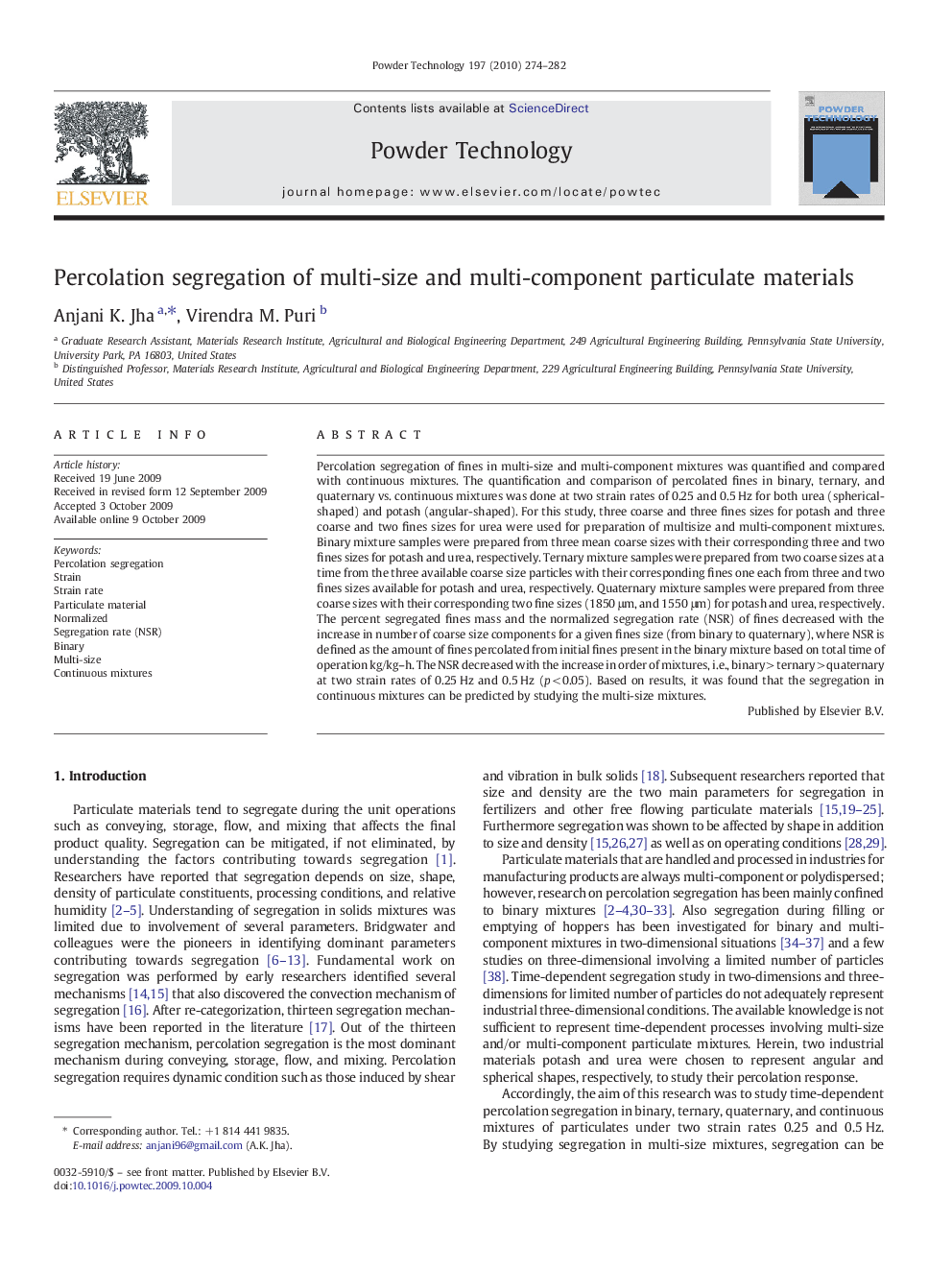| کد مقاله | کد نشریه | سال انتشار | مقاله انگلیسی | نسخه تمام متن |
|---|---|---|---|---|
| 238473 | 465759 | 2010 | 9 صفحه PDF | دانلود رایگان |

Percolation segregation of fines in multi-size and multi-component mixtures was quantified and compared with continuous mixtures. The quantification and comparison of percolated fines in binary, ternary, and quaternary vs. continuous mixtures was done at two strain rates of 0.25 and 0.5 Hz for both urea (spherical-shaped) and potash (angular-shaped). For this study, three coarse and three fines sizes for potash and three coarse and two fines sizes for urea were used for preparation of multisize and multi-component mixtures. Binary mixture samples were prepared from three mean coarse sizes with their corresponding three and two fines sizes for potash and urea, respectively. Ternary mixture samples were prepared from two coarse sizes at a time from the three available coarse size particles with their corresponding fines one each from three and two fines sizes available for potash and urea, respectively. Quaternary mixture samples were prepared from three coarse sizes with their corresponding two fine sizes (1850 μm, and 1550 μm) for potash and urea, respectively. The percent segregated fines mass and the normalized segregation rate (NSR) of fines decreased with the increase in number of coarse size components for a given fines size (from binary to quaternary), where NSR is defined as the amount of fines percolated from initial fines present in the binary mixture based on total time of operation kg/kg–h. The NSR decreased with the increase in order of mixtures, i.e., binary > ternary > quaternary at two strain rates of 0.25 Hz and 0.5 Hz (p < 0.05). Based on results, it was found that the segregation in continuous mixtures can be predicted by studying the multi-size mixtures.
Percolation segregation of fines in multi-size and multi-component mixtures was quantified and compared with continuous mixtures. In addition to size; shape and density also affect the number of multi-size components needed to predict the percolation of fines for continuous mixtures Processing condition such as strain rate also played the role in determining number of components needed to predict the percolation of fines in continuous mixture.Figure optionsDownload as PowerPoint slide
Journal: Powder Technology - Volume 197, Issue 3, 25 January 2010, Pages 274–282